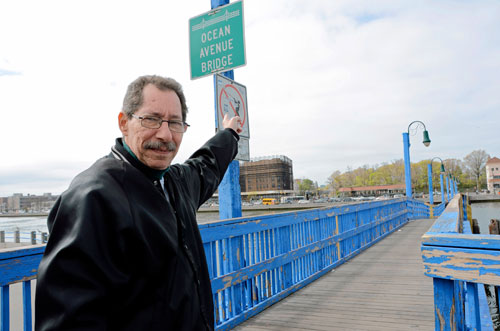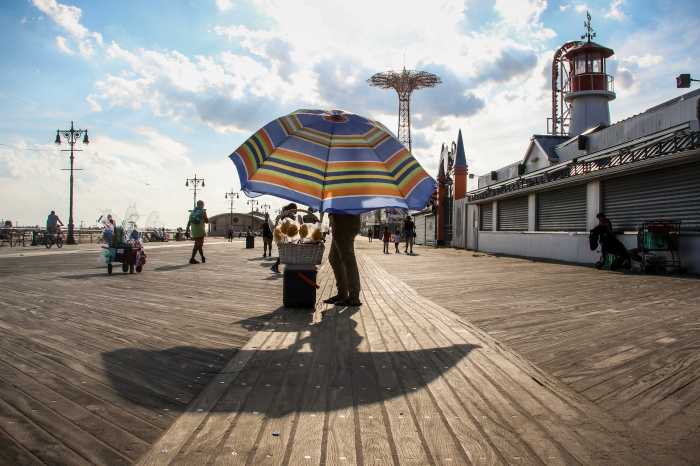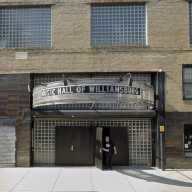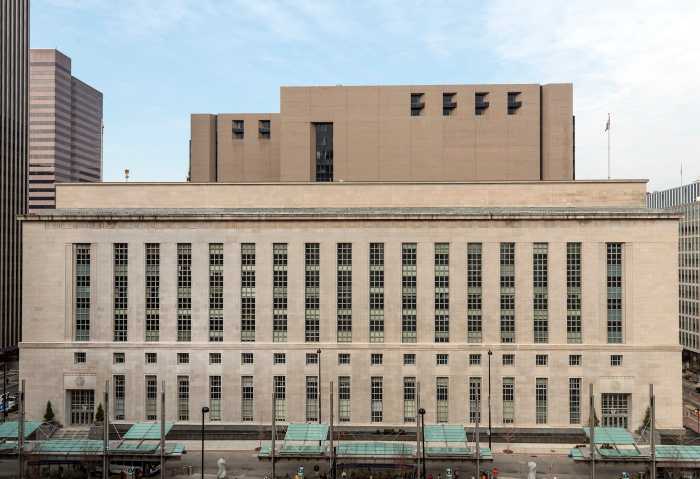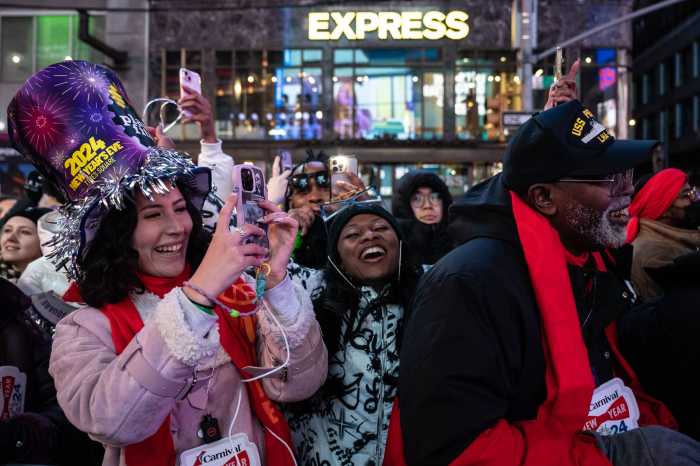It’s a bridge to the past — but is it a bridge too far?
If there’s a storied bridge in New York City, it’s the Brooklyn Bridge. That magnificent span rises up and over the East River as a testament to human ingenuity, bravado, and will power. It was, like many of humanity’s greatest achievements, considered an engineering impossibility right up until the first horse-drawn carriage trotted Kings County to the Big Apple, earning the bridge its place as a wonder of the modern world. But John Augustus Roebling’s fabled overpass isn’t the only bridge in Brooklyn with a past.
Between Sheepshead Bay and Manhattan Beach, a modest, wooden span stretches over an inlet that used to be a creek — it’s still called one — and its history, like the Brooklyn Bridge’s, is marked by a struggle of wills. Unlike the Brooklyn Bridge, however, this struggle shines a light not on man’s better nature, but his worst. There are now fears that this old gangplank is buckling away, and, with it, a sordid history that some would rather see forgotten. So, the question becomes, is the bridge and its checkered history worth saving?
In the late 1870s, Coney Island — wouldn’t you know it — was still an island, but not just any island. It was a hell of an island.
“Oh my goodness,” said borough historian Ron Schweiger. “You had major hotels, a horse racing track, a symphony music hall, two amusement parks. Coney Island was the place to be.”
There were two means of arriving at this Victorian seaside wonderland of gambling and amusement. The less affluent, or more lackadaisical, might float across Coney Island Creek — at the time, still a creek — on an inglorious row boat. But the Cadillacs of Coney crossings were the railways and, of those, there were two.
One, the Brooklyn, Flatbush, and Coney Island Rail Road, ran along E. 16th Street before veering off at Voorhies Avenue and ending at the foot of Coney Island Avenue, near where the Shorefront Y now stands.
The other, the Manhattan Beach Division of the Long Island Rail Road, owned by the wealthy tycoon, Austin Corbin, ran down E. 17th Street and ended near what is today called — funny enough — Corbin Place.
Corbin, through his Manhattan Beach Company, bought an auspicious plot of land just east of Brighton Beach from William Stillwell, and called it — wait for it — Manhattan Beach. Upon this green, wind-swept, salt-smelling parcel, the rail tycoon built two hotels, the swanky Manhattan Beach and the exotic Oriental, and they rose up over that undeveloped expanse as twin testaments to wealth, privilege, and the pursuit of a jolly good time.
Many of New England’s well-to-do flocked to Corbin’s new hotels in search of upscale accommodations, comfort, and respite after a long day at the tracks and the Long Island Rail Road owner was happy to receive them all — all except for certain people deemed undesirable in his eyes.
Not only was Corbin fabulously wealthy, he was also fantastically racist. He wasn’t shy about turning away those of any race, creed, or religion he deemed unsavory, blacks and Jews, in particular.
Certain members of the Jewish faith in 1879 sent Corbin a letter protesting his policy excluding patrons of their religion, challenging his view that Jewish people were, “offensive to the exclusive class of people he wanted to attract.” Unperturbed by their irritation, Corbin continued barring the chosen people from his swanky establishments.
The next year, the Manhattan Beach Company, at Corbin’s behest, built a wooden footbridge across Coney Island Creek at Ocean Avenue.
But less than a year after its completion, seeing that his new Ocean Avenue Bridge provided access to those “undesirables” Corbin so desperately wanted to exclude from his enclave of Anglo-Saxon fun seekers — not to mention, giving his staff access to the many watering holes across the creek in Sheepshead Bay — he ordered its destruction.
That’s when Gravesend town supervisor John McKane stepped in. He declared Corbin’s foot bridge a public walkway and ordered the racist rail magnate to rebuild his bridge, which he did. He just wouldn’t let anybody cross it.
Though he rebuilt the pedestrian passage into his whites-only domain, Corbin placed a barrier on the Manhattan Beach side, blocking access to anyone he deemed unfit to revel in his playground for the rich. The town then did what any other would do upon sensing injustice in its midst — it sued.
In an 1882 New York State Supreme Court decision, Corbin’s bridge was declared a public walkway — despite its private ownership — and he was ordered to refrain from destroying this particular piece of his own property, or from barring passage to any citizen.
“He had to keep the bridge open,” said Schweiger, “regardless of the fact he owned it.”
And the rest, they say, is history — except, it got moved. The wooden span conflicted with a city sewage project, so it was lifted and moved one block west to its current location at E. 19th Street.
That aside, the bridge existed in much the same condition for more than a century — although, due to an unfortunate carriage accident, Corbin did not. Then, a few years ago, the Manhattan Beach end of the wooden structure suddenly broke away from its concrete mooring.
Hearing from an overzealous Sheepshead Bay resident that the bridge had collapsed, Schweiger raced to the scene where, to his relief, he found the damage was not the utter annihilation he expected.
However, when city workers repaired the bridge, they neglected to use the wooden portion that had become dislodged from the main portion of the bridge, which Schweiger says was more or less intact. Instead they procured new lumber from a nearby hardware store, thus destroying a piece of Brooklyn’s history, dubious as it was.
So, Schweiger decided to petition the New York City Landmarks Commission to designate the bridge an invaluable piece of Brooklyn’s past. He’s been compiling his argument in the form of old photographs, letters, and other written documents to prove that the Ocean Avenue Bridge is a tried and true Kings County relic.
But not everyone cares about remembering the history that Corbin’s bridge represents, particularly the parts regarding Corbin himself.
In 2005, the New York Daily News published an article reminding the people who now live on Corbin Place in Manhattan Beach about their street’s notorious namesake. Many of the street’s Jewish residents — not surprisingly — threw a royal fit.
Not happy residing on a street named after a well-known bigot, Corbin Place residents decided they wanted the name changed, but there was only one problem: they didn’t want to spend any money changing the signs.
So, at a Community Board 15 meeting that year, a compromise was reached. The signs would still read Corbin Place, but they would no longer represent the racist Austin Corbin. Instead, it would be a reminder of the first female American soldier to be wounded in combat, Margaret Corbin, who took a bullet after picking up her fallen husband’s rifle during the American revolution.
Despite the somewhat unsavory aspects of the bridge’s history, Schweiger is determined to see the bridge receive landmark status. He said, like it or not, this is our history and it’s worth saving.
“It’s an integral part of the community,” he said. “In order to landmark something it has to be architecturally or historically significant. In terms of architecture, I’m not so sure, but historically speaking, definitely. Between the reason it was built and the way it was associated with the neighborhood, I think we’ll have a very strong case.”
Reach reporter Colin Mixson at cmixson@cnglocal.com or by calling (718) 260-4514.


